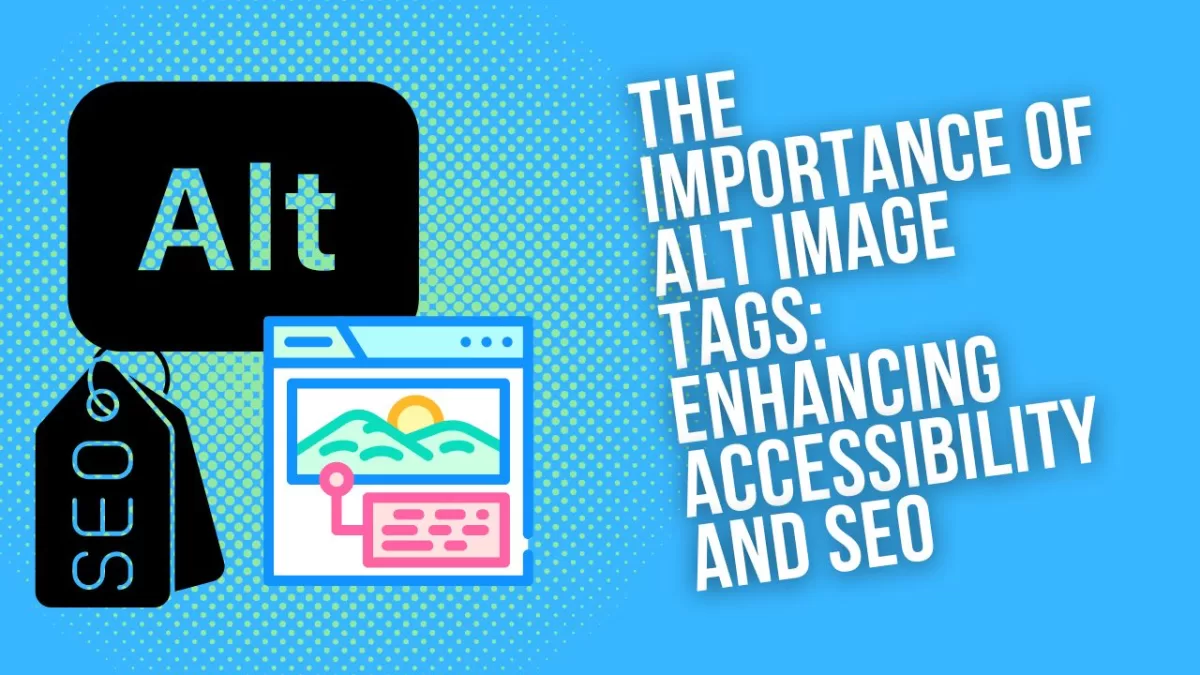In today’s digital age, images play a crucial role in enhancing the overall user experience of a website or blog. However, for individuals with visual impairments or those using assistive technologies, images are inaccessible without alternative text, also known as alt image tags. Alt image tags provide a textual description of an image, and they serve two important purposes: improving accessibility for all users and optimizing search engine optimization (SEO) efforts. In this blog, we will explore the significance of alt image tags and why they should not be overlooked.
Enhancing Accessibility:
- Making Images Accessible to Screen Readers: Screen readers are essential tools that enable individuals with visual impairments to access and understand web content. Alt image tags provide a description of the image, allowing screen readers to read out the text and provide an accurate representation of the content to visually impaired users.
- Enabling Users to Understand Context: Alt image tags provide context and information about the image, allowing users to understand its purpose even if they cannot see it. This is particularly important for images that convey important information, such as charts, diagrams, or infographics.
- Supporting Cognitive Disabilities: Alt image tags not only benefit visually impaired users but also individuals with cognitive disabilities. By providing a textual description of the image, alt image tags help users with cognitive impairments to better understand the content and navigate the website more effectively.
Optimizing SEO Efforts:
- Improving Search Engine Indexing: Search engines rely on alt image tags to understand the content of images and index them appropriately. Including relevant keywords in alt image tags can improve the visibility of your website in search engine results pages (SERPs), leading to increased organic traffic.
- Enhancing Image Search Optimization: Alt image tags are crucial for optimizing image search results. When users search for specific images, search engines analyze the alt image tags to determine the relevance of the image to the search query. By using descriptive alt image tags, you can increase the likelihood of your images appearing in relevant image search results.
- Accessibility Compliance: Alt image tags are an essential component of web accessibility guidelines, such as the Web Content Accessibility Guidelines (WCAG). Ensuring that your website meets these guidelines not only improves accessibility for all users but also helps you avoid potential legal issues related to accessibility compliance.
Best Practices for Alt Image Tags:
- Be Descriptive: Provide a concise and accurate description of the image, focusing on the essential details. Avoid using generic phrases like “image” or “graphic” and instead use specific keywords that describe the image content.
- Use Keywords: Incorporate relevant keywords into alt image tags to improve SEO. However, ensure that the keywords are genuinely descriptive of the image and not used solely for search engine optimization purposes.
- Keep it Concise: Alt image tags should be concise and to the point, typically within 125 characters. Avoid lengthy descriptions that may overwhelm screen reader users.
Alt image tags are crucial for both accessibility and SEO purposes. By providing textual descriptions of images, alt image tags make web content more accessible to individuals with visual impairments and cognitive disabilities. Additionally, alt image tags are essential for search engine indexing and image search optimization, enhancing the visibility and discoverability of your website. To ensure an inclusive digital experience and maximize your website’s SEO potential, prioritize the implementation of descriptive and keyword-rich alt image tags.

